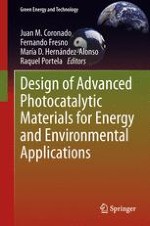Research for the development of more efficient photocatalysts has experienced an almost exponential growth since its popularization in early 1970’s. Despite the advantages of the widely used TiO2, the yield of the conversion of sun power into chemical energy that can be achieved with this material is limited prompting the research and development of a number of structural, morphological and chemical modifications of TiO2 , as well as a number of novel photocatalysts with very different composition. Design of Advanced Photocatalytic Materials for Energy and Environmental Applications provides a systematic account of the current understanding of the relationships between the physicochemical properties of the catalysts and photoactivity.
The already long list of photocatalysts phases and their modifications is increasing day by day. By approaching this field from a material sciences angle, an integrated view allows readers to consider the diversity of photocatalysts globally and in connection with other technologies. Design of Advanced Photocatalytic Materials for Energy and Environmental Applications provides a valuable road-map, outlining the common principles lying behind the diversity of materials, but also delimiting the imprecise border between the contrasted results and the most speculative studies. This broad approach makes it ideal for specialist but also for engineers, researchers and students in related fields.
